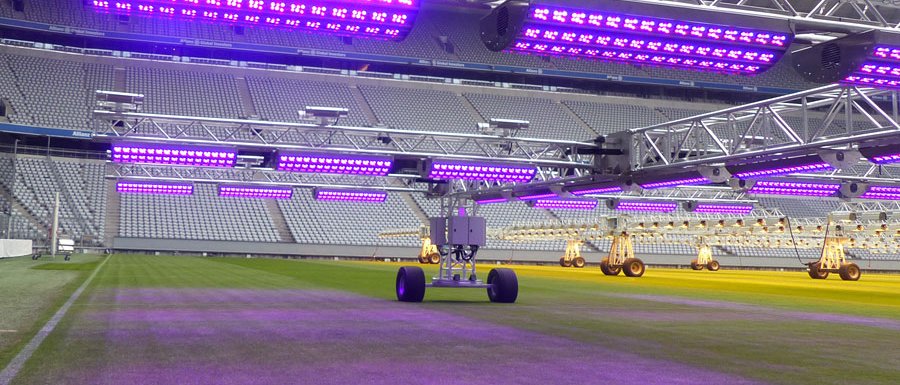The effect of LED lighting:
A scientific view on football turf

If, in the Bundesliga, a football match doesn’t go too well, it is common to blame the lawn: “Der Rasen ist schuld!” – which shows how much importance the professionals attach to the turf.
An intact stadium turf minimizes the players’ risk of injuries, and it has direct impact on the ball’s speed, as well as on the players’ jumping height and stability. In addition, the lawn has to be in an optimal condition to meet the high standards of the media.
Optimal shape and energetic sustainability
To meet the quality requirements in modern sports arenas, high-tech heating and lighting systems are installed, which – alongside a number of other measurement parameters – have to be maintained on a daily basis.
On the one hand, it is necessary to ensure that the turf in the stadium is in optimal shape, and on the other hand, the systems are supposed to be energetically sustainable. In order to achieve this, new technologies such as LED lighting have to be integrated into new research approaches.
New lighting systems in professional football
Since 2013, the Dürnast greenhouse laboratory center at the TUM School of Life Sciences Weihenstephan has been conducting research on the effects of LED lighting and the climate on different types of sports turf. These scientific findings serve as a basis for the development of new lighting systems in professional football.
Based on the measurement data, TUM researchers – in a cooperation project with the Rhenac GreenTec AG – have developed a LED lighting system for sports turf. It illuminates the heavily used sports lawns with an optimal light spectrum, in high quality, depending on the respective climate and other given location-specific factors such as natural light supply (depending on the architecture of the stadium) or the season.
The method makes use of the effects of different light spectra on specific processes in both the primary and secondary metabolism of the grass.
Induction of plant hormones
Together with colleagues from the department of Fruit Science, the researchers in Dürnast found that the grass plants produce certain polyphenols when exposed to blue light. This leads to an induction of plant hormones, due to which the grasses start to branch out more and to accumulate more chlorophyll, which strengthens the cell wall structures. Furthermore, selecting specific light spectra allows to shorten the juvenile phase of the grass, so that the turf becomes more resistant in a shorter period of time.
The use of this new lighting technology will scientifically monitored by scientists at the WZW’s greenhouse laboratory center, and the results of the investigations will be used to develop the technology further. Mobile lighting units are already successfully used in the Allianz Arena in Munich and in the Franz Kremer Stadium in Cologne.